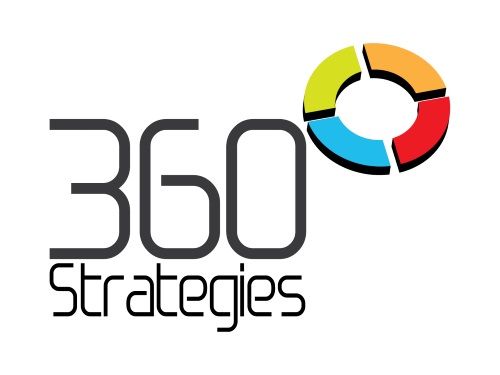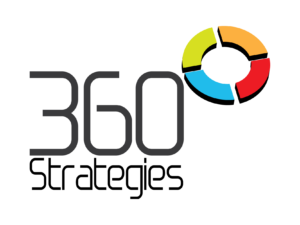As I delve into the realm of strategic business development, I find it essential to grasp its significance in today’s competitive landscape. Business development is not merely about increasing sales; it encompasses a broader spectrum of activities aimed at fostering growth and sustainability. I recognize that strategic business development involves identifying new market opportunities, nurturing relationships, and aligning resources to achieve long-term objectives.
This holistic approach allows me to create a roadmap that guides my organization toward success while adapting to the ever-changing market dynamics. Moreover, I understand that strategic business development is crucial for maintaining a competitive edge. In an era where consumer preferences shift rapidly and technological advancements reshape industries, I must be proactive in identifying trends and responding to them effectively.
By focusing on strategic initiatives, I can position my organization to capitalize on emerging opportunities while mitigating potential risks. This foresight not only enhances my organization’s resilience but also fosters a culture of innovation and adaptability, which is vital for sustained growth.
Key Takeaways
- Strategic business development is crucial for long-term success and growth.
- Identifying opportunities for expansion is essential for staying competitive in the market.
- Building strong partnerships and alliances can open doors to new opportunities and resources.
- Leveraging technology and innovation is key to staying ahead in business development.
- Creating a comprehensive business development plan is necessary for achieving goals and objectives.
Identifying Opportunities for Growth and Expansion
Conducting Thorough Market Research
First and foremost, I conduct thorough market research to understand industry trends, customer needs, and competitive landscapes. By analyzing data and gathering insights, I can pinpoint gaps in the market that my organization can fill.
Qualitative Assessments and Customer Feedback
This process involves not only quantitative analysis but also qualitative assessments, such as engaging with customers to gather feedback and understand their pain points. Through this comprehensive approach, I can uncover opportunities that may not be immediately apparent.
Leveraging Existing Resources and Capabilities
Additionally, I recognize the importance of leveraging existing resources and capabilities to explore new avenues for growth. By assessing my organization’s strengths and weaknesses, I can identify areas where we can innovate or expand our offerings. For instance, if my organization excels in a particular technology, I might explore how we can apply that expertise to adjacent markets or develop complementary products. This strategic alignment of resources with market opportunities enables me to create a robust growth strategy that is both realistic and ambitious.
Building a Strong Network of Partnerships and Alliances

As I navigate the complexities of business development, I have come to appreciate the value of building a strong network of partnerships and alliances. Collaborating with other organizations can open doors to new markets, enhance credibility, and provide access to valuable resources. I actively seek out partnerships that align with my organization’s goals and values, recognizing that mutual benefit is key to successful collaborations.
Whether it’s forming strategic alliances with complementary businesses or engaging with industry associations, I understand that these relationships can significantly amplify my organization’s reach and impact. Furthermore, I prioritize nurturing these partnerships over time. Building trust and rapport is essential for long-term success, so I invest time in understanding my partners’ needs and objectives.
Regular communication and collaboration help me identify synergies and explore joint initiatives that can drive growth for both parties. By fostering a culture of collaboration within my organization, I create an environment where team members are encouraged to seek out partnerships and leverage external expertise, ultimately enhancing our collective capabilities.
Leveraging Technology and Innovation for Business Development
| Technology | Innovation | Business Development |
|---|---|---|
| Cloud Computing | Product Development | Market Expansion |
| Big Data Analytics | Process Improvement | Customer Engagement |
| Artificial Intelligence | Disruptive Solutions | Strategic Partnerships |
In today’s digital age, I recognize that leveraging technology and innovation is paramount for effective business development. The rapid pace of technological advancement presents both challenges and opportunities that I must navigate strategically. By embracing digital tools and platforms, I can streamline processes, enhance customer engagement, and gain valuable insights into market trends.
For instance, utilizing customer relationship management (CRM) software allows me to track interactions with clients, analyze their preferences, and tailor my approach accordingly. Moreover, I am committed to fostering a culture of innovation within my organization. Encouraging team members to think creatively and explore new ideas not only drives product development but also enhances our overall business strategy.
By investing in research and development initiatives, I can stay ahead of industry trends and position my organization as a thought leader in our field. Embracing innovation is not just about adopting new technologies; it’s about cultivating an agile mindset that allows me to adapt quickly to changing market conditions.
Creating a Comprehensive Business Development Plan
Crafting a comprehensive business development plan is a critical step in my journey toward sustainable growth. This plan serves as a blueprint that outlines my organization’s goals, strategies, and action steps for achieving success. To create an effective plan, I begin by conducting a SWOT analysis—assessing our strengths, weaknesses, opportunities, and threats.
This analysis provides valuable insights that inform my strategic direction and help me prioritize initiatives based on their potential impact. Once I have a clear understanding of our current position, I set specific, measurable objectives that align with our long-term vision. These objectives guide my decision-making process and ensure that all team members are working toward common goals.
Additionally, I outline the resources required for implementation, including budget considerations and personnel needs. By establishing clear timelines and accountability measures, I create a structured framework that facilitates progress tracking and allows for adjustments as needed.
Implementing Effective Sales and Marketing Strategies

Understanding Our Target Audience
To achieve this alignment, I conduct thorough market segmentation to identify distinct customer groups and tailor our messaging accordingly. By understanding the unique needs and preferences of each segment, I can craft compelling value propositions that resonate with potential clients.
Integrating Digital Marketing
Moreover, I recognize the importance of integrating digital marketing into my overall strategy. In an increasingly online world, leveraging social media platforms, content marketing, and search engine optimization (SEO) is essential for reaching a broader audience.
Establishing Thought Leadership and Measuring Success
By creating engaging content that showcases our expertise and addresses customer pain points, I can establish thought leadership while driving traffic to our website. Additionally, utilizing data analytics allows me to measure the effectiveness of our marketing efforts in real-time, enabling me to make informed adjustments as needed.
Measuring and Evaluating Business Development Initiatives
To ensure the success of my business development initiatives, measuring and evaluating their effectiveness is crucial. I establish key performance indicators (KPIs) that align with our objectives, allowing me to track progress over time. These KPIs may include metrics such as revenue growth, customer acquisition rates, or partnership success rates.
By regularly reviewing these metrics, I gain valuable insights into what is working well and where adjustments may be necessary. Furthermore, I believe in fostering a culture of continuous improvement within my organization. After evaluating our initiatives, I encourage open discussions among team members to gather feedback and insights on our processes.
This collaborative approach not only enhances accountability but also empowers team members to contribute their ideas for improvement. By embracing a mindset of learning from both successes and failures, I can refine our strategies and drive ongoing growth.
Adapting and Evolving in a Dynamic Business Environment
In the ever-evolving landscape of business development, adaptability is key to long-term success. As I navigate challenges and seize opportunities, I remain committed to staying informed about industry trends and emerging technologies. This proactive approach allows me to anticipate changes in the market and adjust my strategies accordingly.
Whether it’s pivoting our offerings in response to shifting consumer preferences or exploring new markets due to economic shifts, being adaptable ensures that my organization remains relevant. Moreover, I recognize that fostering a culture of agility within my organization is essential for navigating change effectively. Encouraging team members to embrace flexibility and innovation empowers them to respond quickly to new challenges.
By promoting cross-functional collaboration and knowledge sharing, I create an environment where diverse perspectives contribute to problem-solving efforts. Ultimately, by remaining adaptable and open-minded, I position my organization for sustained growth in an unpredictable business landscape. In conclusion, strategic business development is a multifaceted endeavor that requires careful planning, execution, and evaluation.
By understanding its importance, identifying growth opportunities, building strong partnerships, leveraging technology, creating comprehensive plans, implementing effective strategies, measuring outcomes, and adapting to change, I can navigate the complexities of today’s business environment with confidence. Through this holistic approach, I aim not only for immediate success but also for long-term sustainability in an ever-evolving marketplace.



